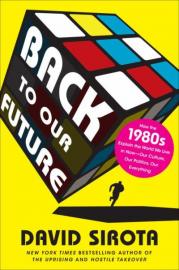By Robert Relihan, Senior Vice President
I am staring at a series of collages I had participants create for a project I just completed. I have always loved this sort of creative exercise. It helps (forces?) people to stretch their right brains. They make more connections and associations when they create the collages and discuss them than they would in almost any other exercise I use in a focus group. Also, I discover symbols and metaphors reflected on the collages and in the responses of their creators than with almost any other analytic approach.
I was surprised to read an article in the New York Times recently that seemed to suggest something novel in the technique. I have been using it for years. One of my approaches is to have participants create collages out of whatever pictures and objects they have around the house.
As I looked as those collages, I realized they said much about the ways a group of young men and women felt about one of their favorite activities, which shall remain nameless. I could see changes that had taken place in the way creativity is expressed by people who are not specifically trained to be creative.
- Fifteen years ago a typical collage would contain pictures from a range of magazines. And, they would also be taken from both the advertising and the articles. Now, it seems that people’s image frame of reference is much more restricted. It is not unusual to see the same pictures repeated in several collages. It is evidence that magazines are much less a part of everyone’s daily life. When I conduct ethnogaphies, many houses I visit have no evidence of magazines.
It was commonplace for collages created by men to have pictures from the sports page of the local newspaper or from Sports Illustrated. No more. All sports news is on-line. And, as more and more people use smart phones, they are getting their sports news in such a way they can’t even print a picture.
And, the images that do appear on the collages are almost exclusively from advertising. This change is a bit more difficult to explain. What qualities do the images from advertising possess that other images do not? As I listen to men and women discuss their collages, the answer becomes obvious. Advertising magnifies and simplifies the representation of emotions. Its images are designed so that consumers “get it.” I can only conclude that generations raised on the media can understand their own emotions only through the intensifying lens of advertising.
- The collages also reveal what is a complementary trend. The Internet, in effect, has short-circuited creative thinking. I used to see collage creation as a serendipitous process in which my participants wandered through magazines or their homes and happened upon pictures and objects that triggered a response they might not otherwise have felt.
Now, however, collages have become more logical and literal. I see a trophy in a collage, and I ask its creator to explain it. Oh, he says, I felt successful, so I Googled “trophy” and printed the first picture I found. So the search for images had become less about metaphorical and and more interpretation.
I can’t help but feel that this presents a problem for my collage exercise. The Internet enables consumers to get THE answer, and that answer more often than not is verbal and logical. The emotional dimension is lost.
What this all suggests is that in the age of the Internet, with Millennials as targets, we need new ways to tap into the emotions of consumers. Or, we ourselves need new metaphors for that emotional response.








 questions you answer, the more points you accrue. And, with points you get to pose questions to other users. Not a bad idea leveraging online technology and rewarding business people with something of real value—information. The website recently had a contest and I entered on a whim. My entry was an essay critiquing the site.
questions you answer, the more points you accrue. And, with points you get to pose questions to other users. Not a bad idea leveraging online technology and rewarding business people with something of real value—information. The website recently had a contest and I entered on a whim. My entry was an essay critiquing the site.







